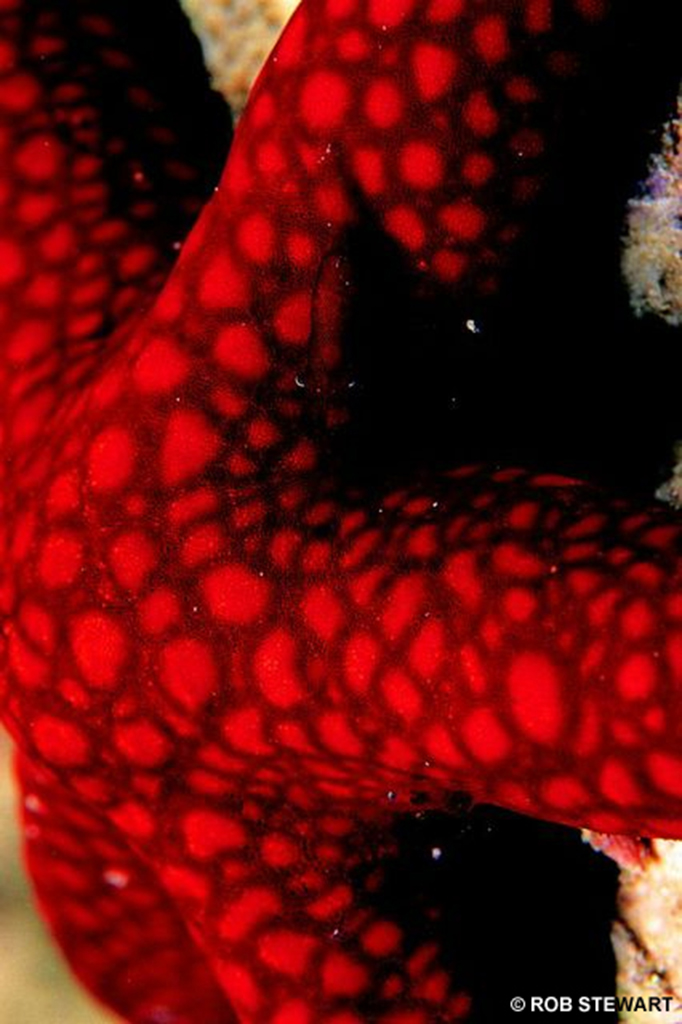Ocean Acidification
The Global Impact
The impacts of ocean acidification could be enormous. The change in ocean chemistry leads to collapsing food webs, corrosive polar seas, dying coral reefs and mass extinctions – which could alter our food, water and air forever. Acidity is measured using pH measurements. The higher a pH value is, the more basic, or non-acidic the substance is. The lower the pH value is the more acidic a substance is.
Right now, the ocean’s pH level is 8.1. If our emissions continue at this rate by 2100, the ocean’s pH will lower 0.3 to 0.5 units [2. DFO Canada.]. Marine organisms will be drastically impacted by this shift in pH levels in the water. To give you a little perspective on what this could all mean in humans a drop of 0.1 pH units in their blood can result in extreme consequences, including seizures, heart problems and coma [3. NOAA. PMEL Carbon Program. www.pmel.noaa.gov].
What will this drastic drop in pH levels mean for our ocean life?
The Ocean’s Changing Chemistry
When there are increases of carbon dioxide in the air, the oceans chemistry changes. The oceans absorb carbon dioxide and carbonic acid forms. More acid in the ocean reduces the levels of calcium carbonate, which is needed by sea life to form skeletons and shells. By 2010, calcium carbonate levels will decrease by 50 percent[4. Victoria J. Fabry, Brad A. Seibel, Richard A. Feely and James C. Orr. Ocean acidification on marine fauna and ecosystem processes. reefresilience.org/Fabry_etal_2008.pdf].
Without calcium carbonate, the skeletons of marine life will grow thin, brittle or dissolve. Other essential processes of ocean organisms will be altered by the changing chemistry of the ocean including: breathing, reproduction and photosynthesis.
It is not only the higher concentration of carbon dioxide that is the issue; it’s also the rapid rate of change. Levels of carbon dioxide are rising too quickly for life and ecosystems to evolve to this new environment. By 2100, oceans could become 150 percent more acidic. This is a level of pH the oceans haven’t experienced for more than 20 million years. [5. NOAA www.nmfs.noaa.gov]
Collapsing Food Webs
Plankton form the basis of ocean ecosystems. Tiny plants – phytoplankton, that could be as small as 0.0001 millimeters, and the animal-like zooplankton, that could be as small as 0.02 millimetres are the most essential to ocean life [6. United States Environmental Protection Agency.]. Phytoplankton and zooplankton are the most abundant life form in the ocean and all marine life depend on plankton for food [7. NOAA. www.nmfs.noaa.gov].
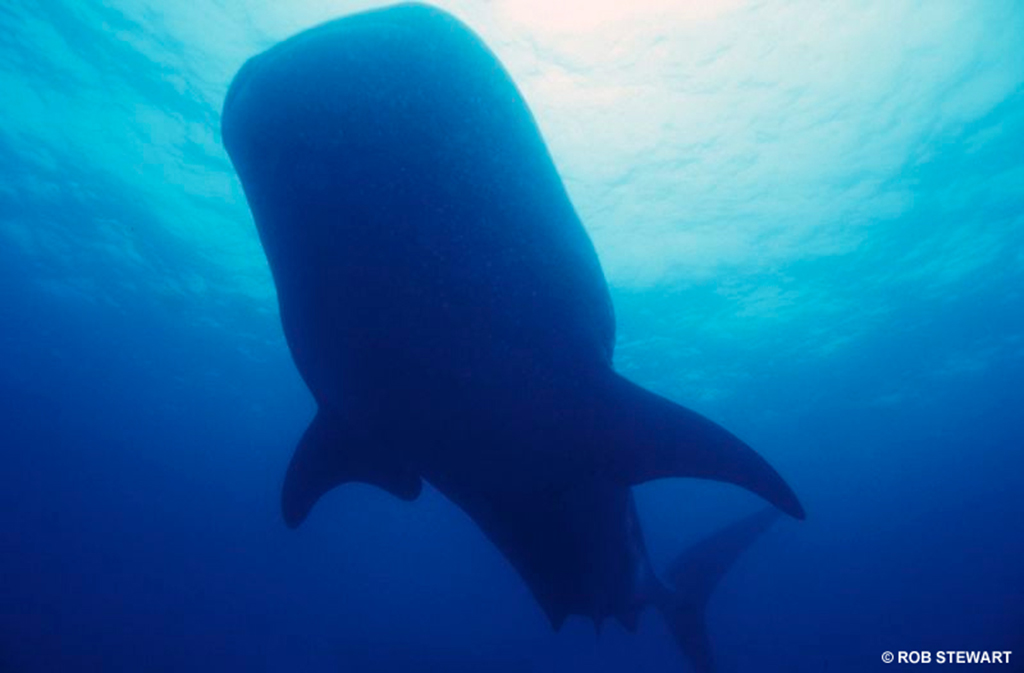
Whale sharks can reach 18 metres in length. They, like the blue whale, have a diet heavy in zooplankton.
The largest animals on Earth, blue whales – live on zooplankton, krill and copepods – (small crustaceans). Blue whales can eat 3,636 kilograms of krill a day. [8. National Marine Fisheries Service. NOAA. noaa.gov/species/blue-whale]
If food systems collapse, ecosystems collapse. When the plants and animals at the bottom of a food chain, like plankton, die in the millions or billions, animals further up the food chain die, setting off a chain reaction [9. Hellum, Why Zooplankton are important (marine food webs) Dec 5 2012]. If we lose plankton to ocean acidification, all the life in the ocean will be threatened.
Would you believe that miniscule phytoplankton is responsible for producing most of the oxygen in the air that we breathe?
Ocean plankton are also crucial to human life; they provide at least 50 percent of the oxygen that we breathe. Due to global warming and acidification, that capacity to provide oxygen and support the fundamental food chains of the ocean has decreased by 6 percent over the last three decades.
Rising acidic levels in our oceans appear to be robbing the tiny animals that form the bedrock of the marine food web of a vital nutrient. This shift in the ocean’s chemistry could reduce populations of phytoplankton, which could present a cascade of changes to ocean life.
Ocean Acidification: The Corrosive Polar Seas
Polar oceans, like the Arctic, are particularly vulnerable to ocean acidification because cold water naturally has low carbonate levels. By the time atmospheric carbon dioxide exceeds 490 parts per million – by 2040 to 2050 – more than half of the Arctic Ocean is projected to be corrosive to calcium carbonate. [10. European Project on Ocean Acidification. www.epoca-project.eu]

Melting ice in the Arctic
Arctic and Antarctic marine food chains will be greatly impacted by ocean acidification. Researchers in 2012 discovered that shells of marine snails, pteropods, in the waters of Antarctica, the Southern Ocean, are already dissolving [11. British Antarctic Survey. Press Release – First evidence of ocean acidification affecting live marine creatures in the Southern Ocean. Paper published in Nature Geoscience. Nov. 25, 2012. Pteropods are an important food source for fish and birds. Pterpopods may not die because of their shells dissolving, but it will increase their vulnerability to sickness and predators.
The Loss of the Sea Butterfly
The sea butterfly is a swimming snail-like creature that is the size of a grain of sand – and is the base of the food chain for many commercial fish, seabirds and whales. This type of pteropod uses calcium carbonate to build a thin shell. As the levels of acidity in the ocean increase, the sea butterflies will rise closer to the ocean surface for shell building, which will limit their habitat space.
The Southern Ocean is expected to be so corrosive by 2050 to 2100 that the shells of sea life will dissolve. Experiments were performed on sea butterflies that exposed them to carbonate levels similar to that projected for the Southern Ocean resulted in their shells significantly dissolving within only 48 hours. [12. Victoria J. Fabry, Brad A. Seibel, Richard A. Feely and James C. Orr. Ocean acidification on marine fauna and ecosystem processes. reefresilience.org/Fabry_etal_2008.pdf]
Studies of oceans around Antarctica in 2012 show that pteropods’ shells are already dissolving due to ocean acidification. We are already in danger of losing creatures that feed the fish we eat.
Oceans Provide Food for Marine Life and Humans
Clams, oysters, mussels, sea snails, lampshells and sea urchins will also have trouble building their shells and skeletons because of ocean acidification. They are food for humans, birds, seals and other ocean life. If animals like seals lose shellfish, a staple to their diet, how will they survive?
Even a small change in ocean acidity can drastically impact the larvae survival of shellfish. In experiments with carbon dioxide concentrations that are estimated to occur later this century, more than 50 percent of hard clam and bay scallop larvae died. Those that did survive were smaller and took longer to develop. [13. Stony Brook University’s School of Marine and Atmospheric Sciences. Science News.] US shellfish harvests will decline by 25 percent over the next 50 years because of acidification, according to experts.
Ocean acidification will change food webs, which will cause stress to other species and the environment, and some food webs will collapse. Humans rely on the sea for food – fish are the main protein source for a third of the human population on the planet.[14. Revolution.]
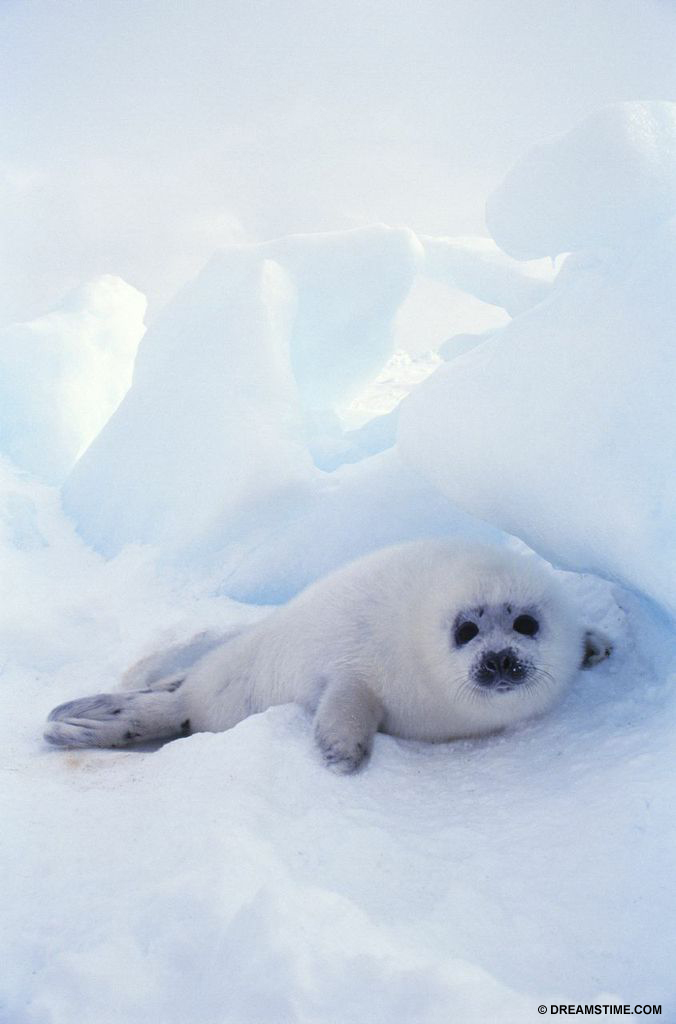
Shellfish is a staple of a seal’s diet

One third of the world depends on seafood for survival
Fishing is not only a source of food, for many it is their job. Globally, about 200 million people depend directly or indirectly on the fishing industry [15. Marine Stewardship Council. www.msc.org]. In 2003, the export value of the world trade of fish was US$63 billion – that is more than the exports of rice, coffee, sugar and tea combined. [16. Marine Stewardship Council. www.msc.org]
What will happen if the ocean food webs collapse?
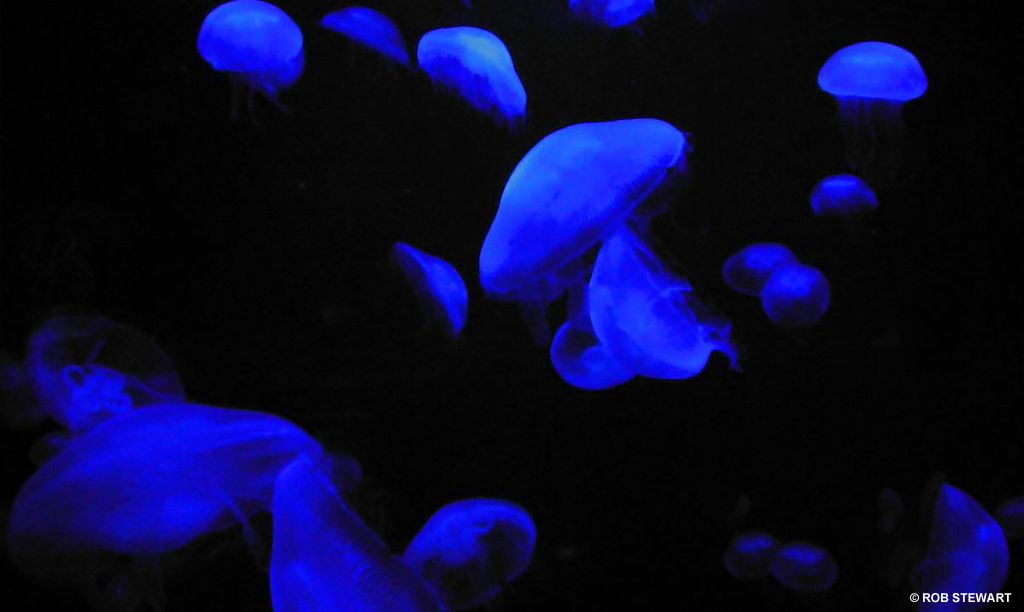
Jellyfish populations are on the rise
Acidification’s effect on calcium carbonate levels will have severe impacts on oceanic and terrestrial species, just as it has in extinctions in the past. If ocean plants and animals are lost to acidification – we don’t know what the full impact and ripple effect will be. Prey may disappear and predators will have to search for new food, or if predators are lost there could be an overabundance in prey.
We have already seen how other environmental disasters have impacted food webs. For example: due to the overfishing of sharks, the blacktip shark disappeared off the coast of North Carolina [17. Lack of Species Leaves Ecosytems Flat, Jan, 2011]. This allowed the cownose ray population to explode, which feeds on scallops, so in turn this devastated the bay scallop industry.
We can’t just work to preserve one species – we need to preserve whole ecosystems.
Ocean acidification could crumble food webs, change habitats of ocean life, and in turn, wipe out entire ecosystems, livelihoods and civilizations. The oceans cannot bounce back to a harmless level if atmospheric carbon dioxide returns to normal. Ocean pH will remain acidic until it is neutralised by the dissolving and weathering of land and marine rocks— which is a very long process. [18. J.E.N. Veron. “Mass extinctions and ocean acidifcation: biological constraints on geological dilemmas.” Coral Reefs. 2008.]
Sound dire? Remember knowing this information gives you the power to make real change.
Dying Coral Reefs
Coral reefs are amazing, massive underwater structures and are some of the oldest and most diverse ecosystems on the planet. [19. NOAA.]
Coral reefs can be found in more than 100 countries around the world. Worldwide, coral reefs cover an estimated 285,000 square kilometres (110,000 square miles), less than 1 percent of the sea floor, but are home to 25 percent of ocean species, including 4,000 species of fish and thousands of plants and animals. [20. Revolution.]
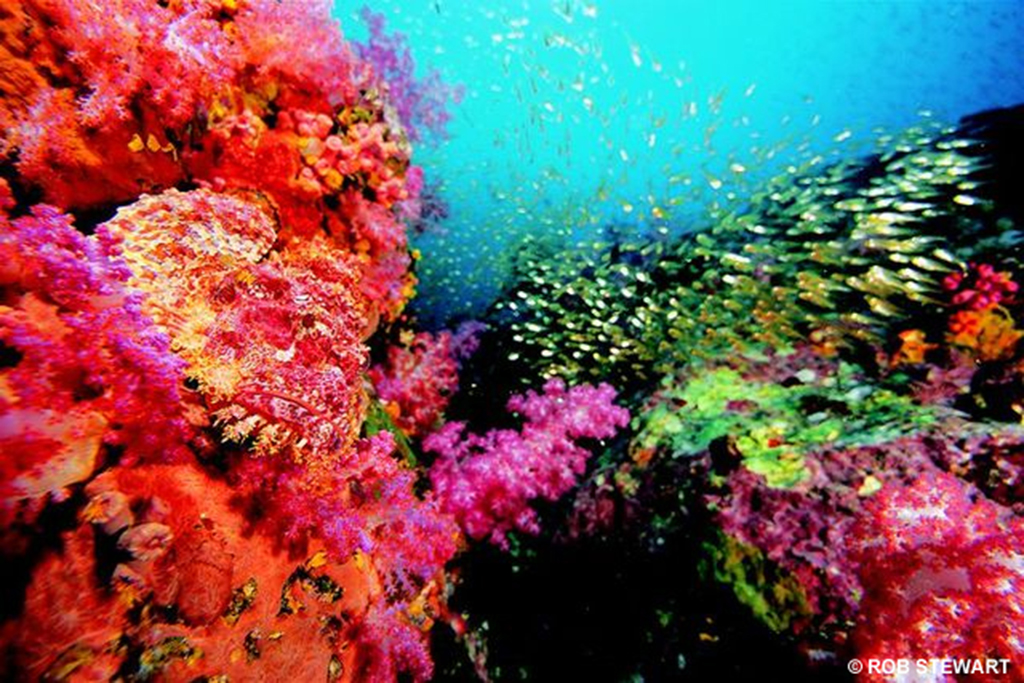
A single reef in the Coral Triangle, like this in Papua New Guinea, could have 3500 species living on it.
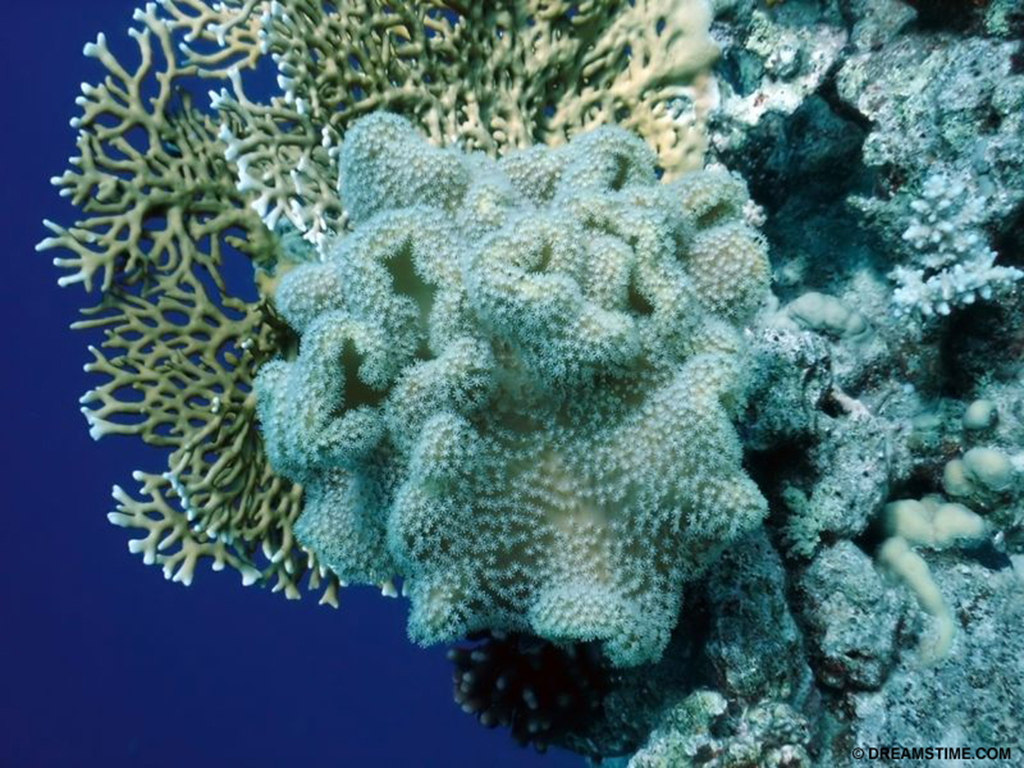
Coral polyp
Reefs, like rainforests are centres of biodiversity. 3,000 species can live on one reef and depend on the reef for food and shelter [21. Revolution.]. If today’s carbon dioxide levels double as expected by 2100, there will be a 3 to 60 percent decline in the rate of reef building [22. Coral Reef Watch. NOAA.]. Coral reefs are being lost more than twice as fast as the rainforests. Current estimates reveal that we will lose the other 50 percent over the next 40 years.
Corals grow in colonies that connect single coral polyps, tiny jellyfish-like organisms with limestone skeletons, into one colony. Coral polyps’ skeletons are made out of calcium carbonate and harden into reefs. The reefs are brilliant colours because the coral polyps have clear bodies and the colours come from the algae living inside their tissues. A coral reef can be made up of many joined colonies and survive for millions of years. Ocean acidification is a great threat to our beautiful coral reefs because they need high levels of carbonate to build their skeletons [23. NRDC.].
Reefs first evolved about 500 million years ago, creating structures and food for creatures, increasing ecosystem complexity and paving the way for an explosion in diversity. Reefs were wiped out in each of the mass extinctions – and were often the first to go. Reefs however kept re-emerging – even after each of the five mass extinctions, though it often took them millions of years to rebuild [24. Revolution and Global Reef Project. www.globalreefproject.com]. According to geological records, ancestors of modern coral reef ecosystems were formed at least 240 million years ago and established coral reefs are between 5,000 and 10,000 years old [25. Coral Reef Alliance, Coral Reef Overview, www.coral.org].
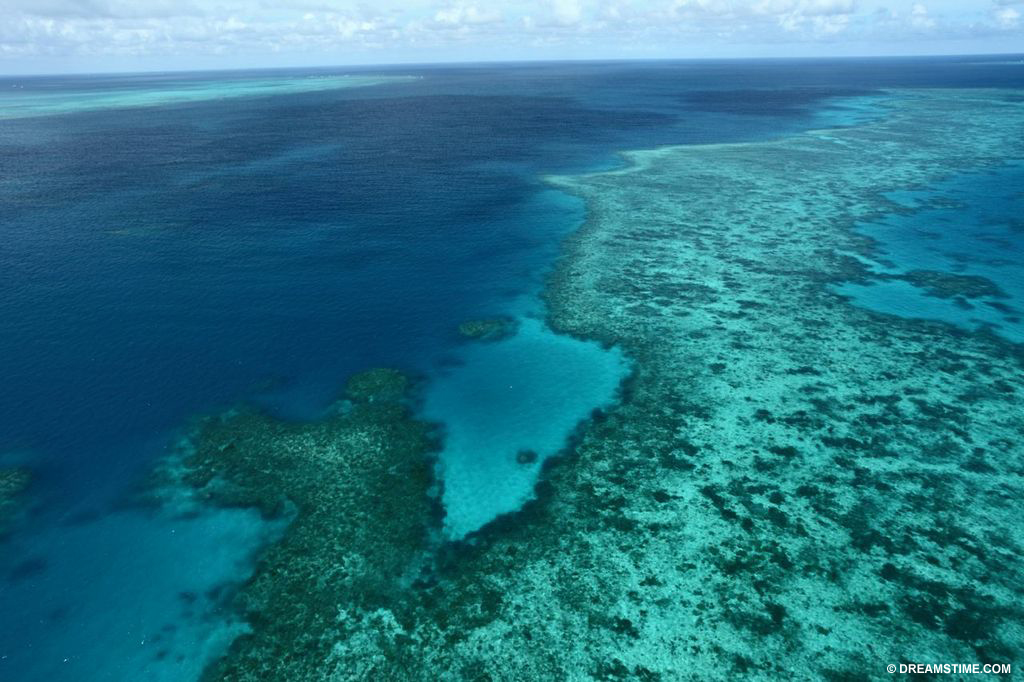
Great Barrier Reef
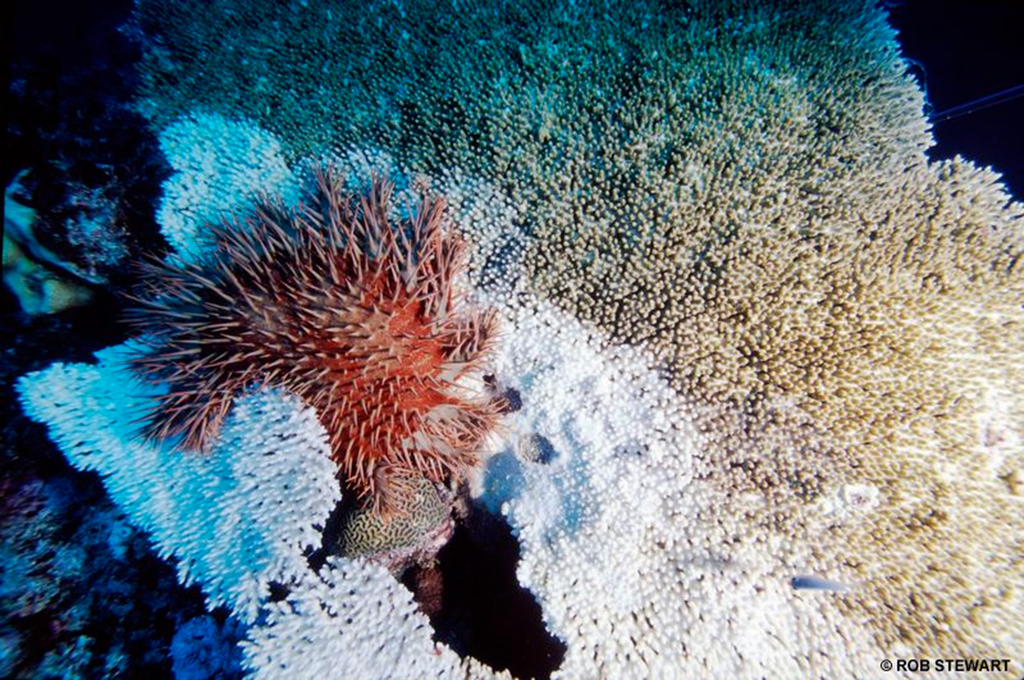
Coral reefs, like rainforests, are centres of biodiversity. Ocean acidification is already having a significant impact on our coral reefs[30. Katharina Fabricius. Revolution.]
Australia’s Great Barrier Reef is the world’s largest structure of living organisms [26. Australian Government. Great Barrier Reef Marine Park Authority. www.gbrmpa.gov.au], covering more than 300,000 square kilometres [27. Australian Government. www.gbrmpa.gov.au]. There are more than 3,000 reefs in the incredible Great Barrier Reef system that range in size from one to more than 10,000 hectares [28. Australian Government. http://australia.gov.au]. The Great Barrier Reef brings in 2 billion dollars per year to Australia, and a great deal more to other countries and territories of the world.
Video Link: The Great Barrier Reef
If the carbon dioxide levels in the atmosphere reach 800 ppm later this century as predicted, all the reefs of the world will be eroding relicts [29. J.E.N. Veron. “Mass extinctions and ocean acidifcation: biological constraints on geological dilemmas.” Coral Reefs. 2008.]. There are approximately 10,000 coral reefs in the world and we are destroying one every other day. For example, 90 percent of the coral in Jamaica is gone and 75 percent of caribbean coral is gone.
Why should you care about the coral reefs?
We need healthy coral reefs for a healthy world. They are home to more than 1 million diverse aquatic species. They provide new medicines for humans, fisheries are dependent on them and they provide a natural barrier protecting coastal cities, communities and beaches.
If we continue producing the same amount of carbon dioxide as we do today, we won’t see coral reefs 20 to 50 years from now [32. Katharina Fabricius. Revolution.]. If carbon dioxide emissions continue as predicted, reefs will literally start dissolving in 2070. Scientists know, from the fossil record, that reefs have been heavily impacted by high carbon dioxide events in the past, and it took them millions of years to recover. [33. Union of Concerned Scientists. www.ucsusa.org & Katharina Fabricius.]
We don’t have millions of years for our reefs to re-emerge.
Video Link: “Why the ocean matters” from National Geographic
Warnings of Acidification: What damage has already been done?
If the loss of food chains, the destruction of coral reefs and the change in our oceans chemistry is not enough to convince you of the potential catastrophic impact of ocean acidification – let’s look at some of the damage that has already occurred due to ocean acidification.
Mass Extinction
In all the five global mass extinctions, changes to the world’s carbon cycle and to the oceans chemistry are to blame.[34. J.E.N. Veron. “Mass extinctions and ocean acidi?cation: biological constraints on geological dilemmas.” Coral Reefs. 2008.]
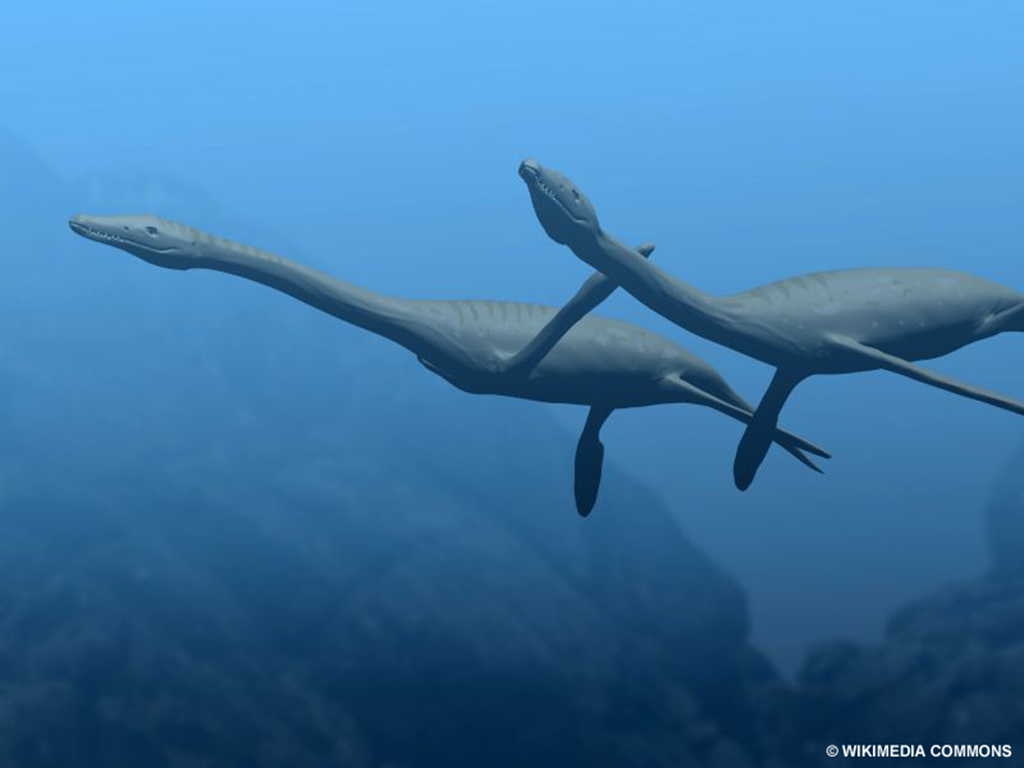
Plesiosaurus was a genus of fish-eating marine reptiles that lived during the early Jurassic period
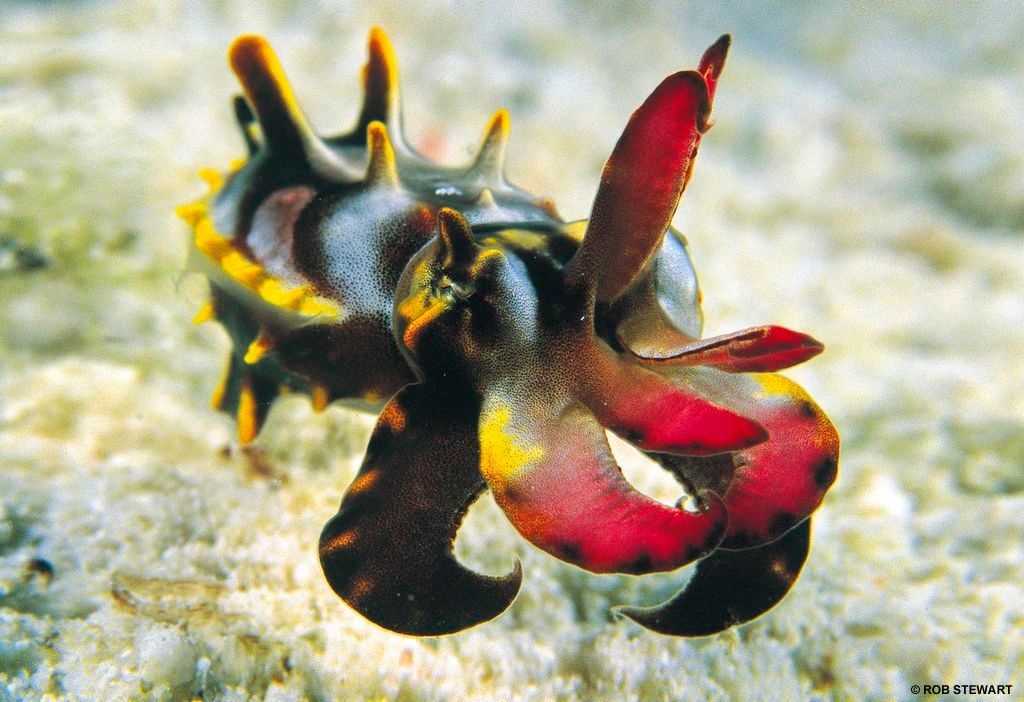
The flamboyant cuttlefish is the most highly evolved cephalopod in the world
Today’s rapid carbon dioxide changes are comparable to mass extinctions because of how quickly the conditions of the world are changing. In the past, there were also high levels of carbon dioxide, but life had thousands, if not millions, of years to adapt. Today, species have years, maybe decades to adapt.
We do know of one period in the last 300 million years when the oceans changed as fast as today: the Palaeocene-Eocene Thermal Maximum (PETM) period. It was 55 million years ago that a trillion tonnes of methane burst from the ocean. Once in the air, the methane changed to carbon dioxide. World temperatures rose six degrees and carbon dioxide levels doubled to 1800 ppm. [35. Science News. “Oceans Acidifying Faster Today Than in Past 300 Million Years.” March 7, 2012.]
This drastic change caused ocean acidification and killed millions of ocean and land species.[36. New Scientist. “Oceans acidifying at unprecedented speed.” March 2012. Michael Marshall.]
It took thousands of years for the ocean’s pH to drop by 0.5.
The ocean pH levels of today are predicted to fall another 0.3 to 0.5 units by 2100. This means we could see massive changes to ocean life just like we did 55 million years ago.[37. Science News. “Oceans Acidifying Faster Today Than in Past 300 Million Years.” March 7, 2012]
Coral Reef Devastation: Papua New Guinea
If you want to see the future of ocean acidification and the impact it will have on our ocean’s coral reefs – just look at the waters of Papua New Guinea.
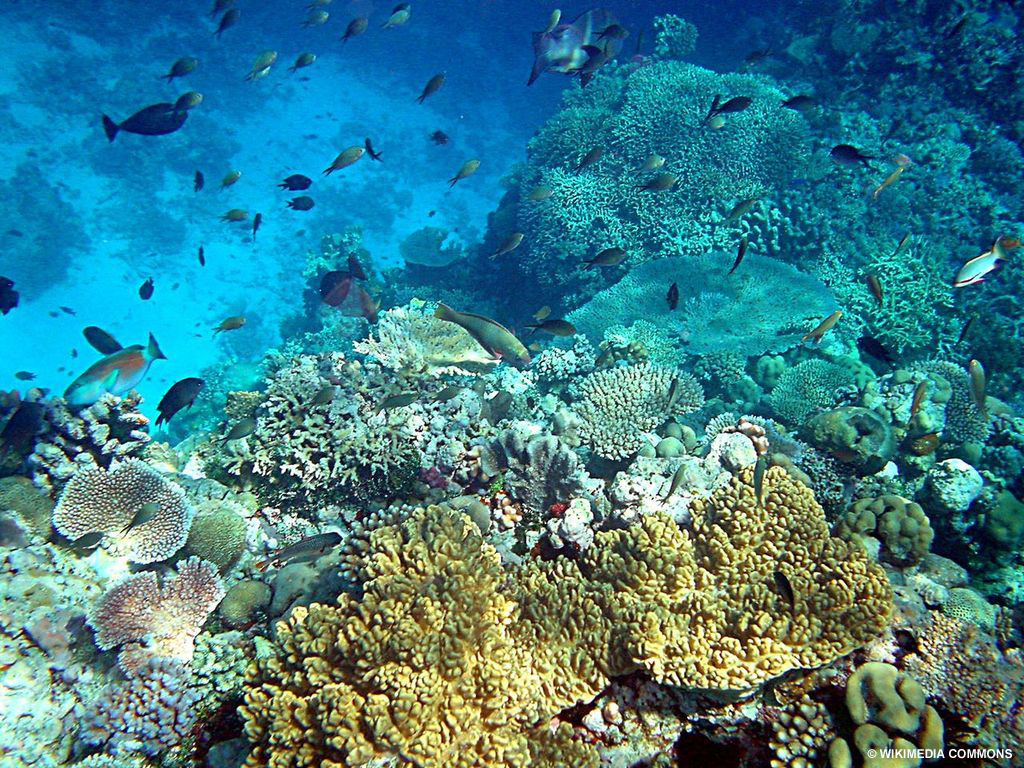
Study reef in Papua New Guinea

Dr. Katharina Fabricius
Coral Reef Ecologist Dr. Katharina Fabricius studied coral reefs in Papua New Guinea around volcanic cracks in the sea floor where carbon dioxide naturally bubbles out, making the water very acidic [38. Katharina Fabricius et al. “Losers and winners in coral reefs acclimatized to elevated carbon dioxide concentrations.” Nature Climate Change.] – much like the future impact of ocean acidification.
What Dr. Fabricius witnessed was frightening. Acidification caused losses in coral diversity, behaviour, growth and population. Diversity of corals dropped by 40 percent and the reef became dominated by one form of coral. She learned that in highly acidic waters, reefs would be much simpler and offer fewer habitats for the hundreds of thousands of species that rely on thriving coral reefs.[39. Australian Government. Australian Institute of Marine Science. www.aims.gov.au/]
In as soon as the next few decades, ocean acidification and temperature stress from global warming will likely lead to severely reduced diversity, structural complexity and resilience of Indo-Pacific coral reefs. If atmospheric carbon dioxide concentrations increase to 750?ppm by the end of this century as expected – the ocean waters will get more acidic (pH going from 8.1 to 7.8) and most reef organisms will suffer.
The Dwindling US Shellfish Industry
The shellfish industry is dependent on hatcheries that supply larvae to shellfish farmers. Oyster farmers on the Pacific Northwest coast of the United States are already feeling the impact of ocean acidification on their livelihood[40. PBS. NewsHour. Trouble in the water:Acidifying Oceans Hinder Health of Northwest Shellfish. Dec. 7, 2012.]. Even small changes to the level of ocean acidity can drastically impact the larvae survival of shellfish.
A few short years ago, Pacific Northwest hatcheries that supplied oyster larvae were dying en masse. The Pacific Ocean water had become too acidic and it ate away at the young oyster shells before they could fully form. The larvae died within two days. Farmers learned that natural tide and wave patterns in the Pacific Northwest bring acidic ocean water to the coast. Larvae production in the US Northwest plummeted 80 percent between 2005 and 2009. To avoid future, issues hatcheries now monitor the incoming ocean water and make adjustments to the pH.
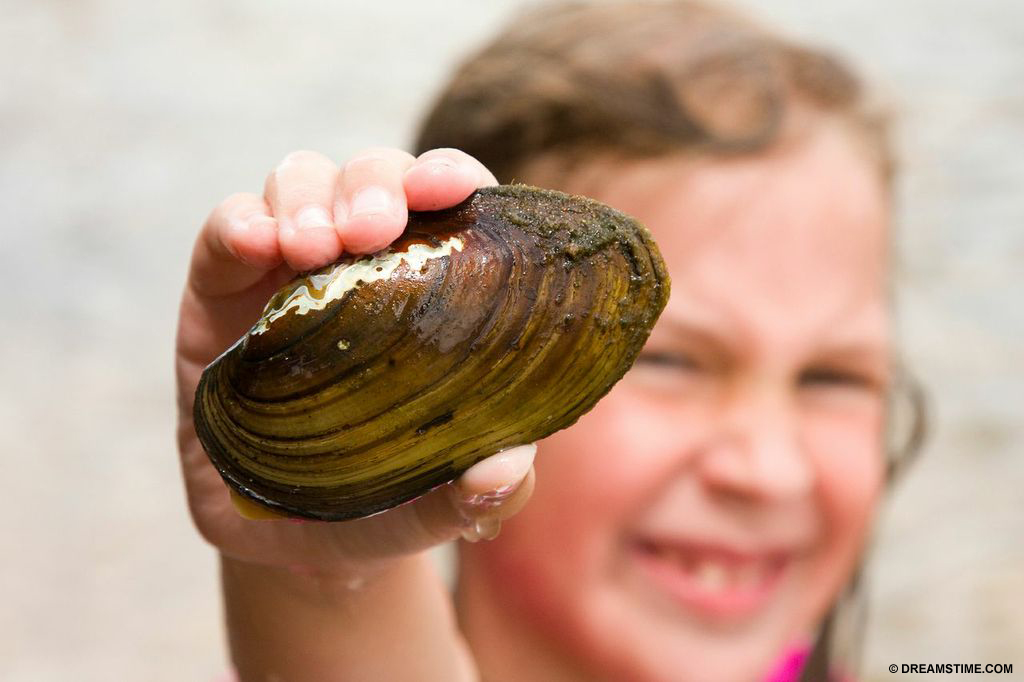
Shellfish, like this clam, are affected by rising acidity levels
Experts predict US shellfish harvests will decline by 25 percent over the next 50 years, causing losses of millions of dollars to the US shellfish industry. Now other coastal shellfish farmers in the US are reporting similar losses. [41. Mother Nature Network.www.mnn.com]
The shellfish industry in Washington was one of the first to feel the economic effects of acidification. Now, Washington State has launched a $3.3-million, science-based plan to address the problem of ocean acidification for the region and the globe.[42. Scientific American. Washington State Declares War on Ocean Acidification. Nov. 27, 2012.]
Now that you understand the impact of ocean acidification, what are you going to do? You can take action, make smart consumer choices and spread the word.


